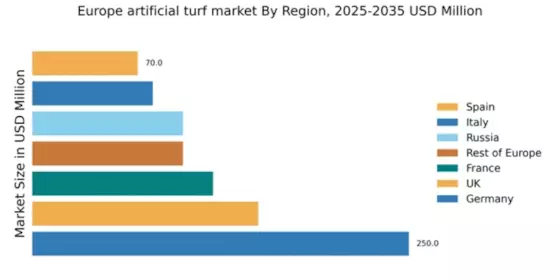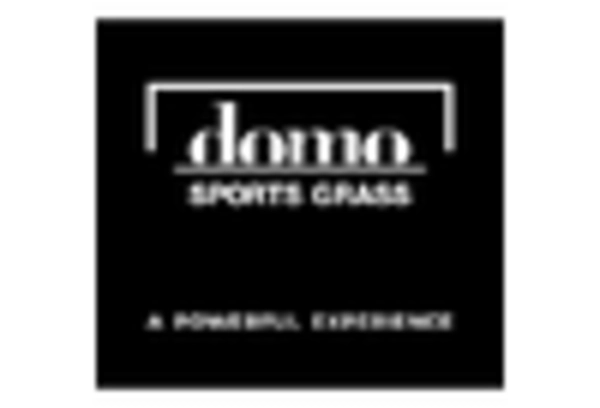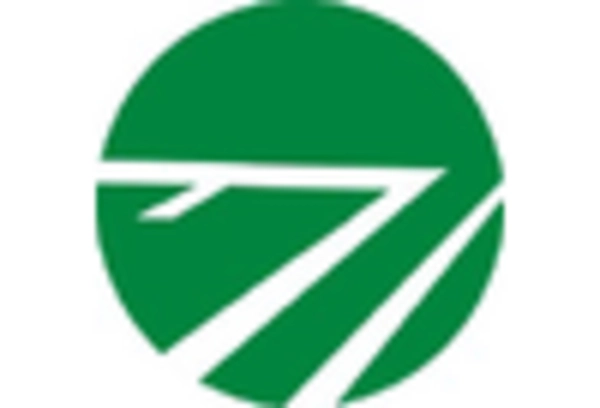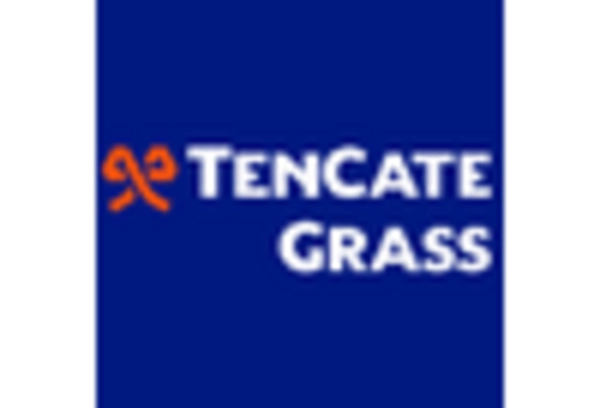Germany : Germany's Dominance in Turf Solutions
Germany holds a significant market share of 250.0, representing approximately 30% of the European artificial turf market. Key growth drivers include increasing investments in sports infrastructure, particularly in cities like Berlin and Munich, and a growing trend towards sustainable sports surfaces. Government initiatives promoting eco-friendly materials and regulations supporting sports development further enhance demand. The industrial landscape is bolstered by advanced manufacturing capabilities and a strong focus on innovation in turf technology.
UK : UK's Expanding Sports Infrastructure
The UK market, valued at 150.0, accounts for about 18% of the European artificial turf sector. Growth is driven by rising participation in sports and recreational activities, particularly in urban areas like London and Manchester. The government has introduced funding programs to support local sports facilities, which has spurred demand for artificial turf. Additionally, the increasing popularity of multi-sport facilities is shaping consumption patterns, with a focus on durability and performance.
France : France's Diverse Turf Applications
France's artificial turf market, valued at 120.0, represents around 15% of the European total. The growth is fueled by the increasing popularity of soccer and rugby, particularly in regions like Île-de-France and Provence-Alpes-Côte d'Azur. Government initiatives aimed at enhancing sports facilities and promoting outdoor activities are key drivers. The market is also influenced by a shift towards environmentally friendly turf solutions, aligning with EU sustainability goals.
Russia : Russia's Growing Sports Infrastructure
With a market value of 100.0, Russia accounts for approximately 12% of the European artificial turf market. Key growth drivers include significant investments in sports infrastructure, especially in cities like Moscow and St. Petersburg, in preparation for international sporting events. Government policies supporting sports development and urban renewal projects are enhancing demand. The competitive landscape features both local and international players, focusing on quality and performance.
Italy : Italy's Multifaceted Turf Usage
Italy's artificial turf market, valued at 80.0, represents about 10% of the European market. Growth is driven by the increasing use of artificial turf in soccer, tennis, and landscaping, particularly in regions like Lombardy and Lazio. Government initiatives promoting sports participation and urban green spaces are key factors. The competitive landscape includes both domestic and international brands, with a focus on high-quality, durable products tailored to local needs.
Spain : Spain's Thriving Sports Culture
Spain's market, valued at 70.0, accounts for roughly 9% of the European artificial turf sector. The growth is driven by a vibrant sports culture, particularly in cities like Barcelona and Madrid, where artificial turf is increasingly used in soccer and multi-sport facilities. Government support for sports infrastructure and sustainability initiatives is enhancing market dynamics. The competitive landscape features both established and emerging players focusing on innovation and quality.
Rest of Europe : Varied Turf Applications in Europe
The Rest of Europe market, valued at 100.0, represents about 12% of the total European artificial turf market. This sub-region includes diverse markets with varying demand trends, driven by local sports cultures and infrastructure investments. Countries like Belgium and the Netherlands are notable for their focus on eco-friendly turf solutions. The competitive landscape is characterized by a mix of local and international players, each adapting to regional preferences and regulations.


















Leave a Comment